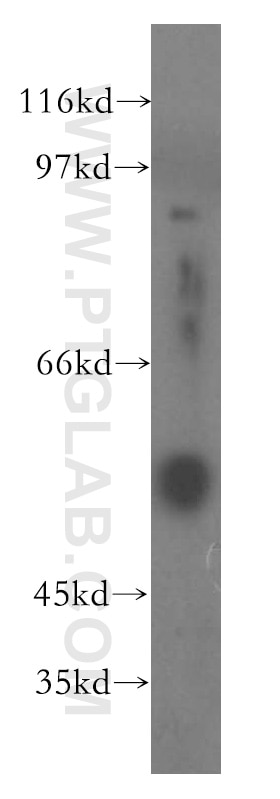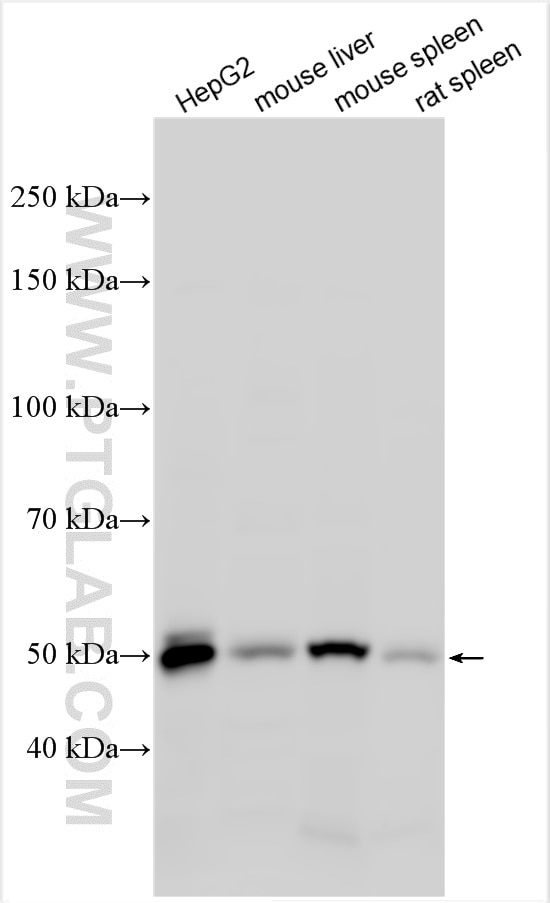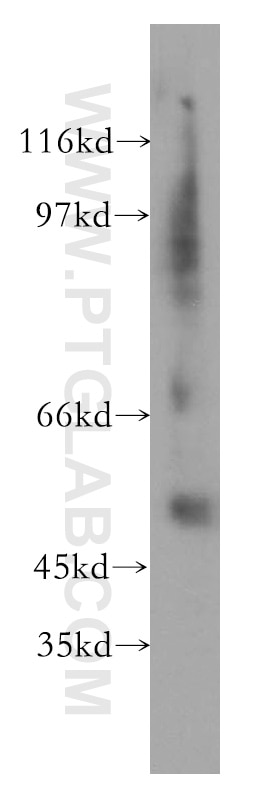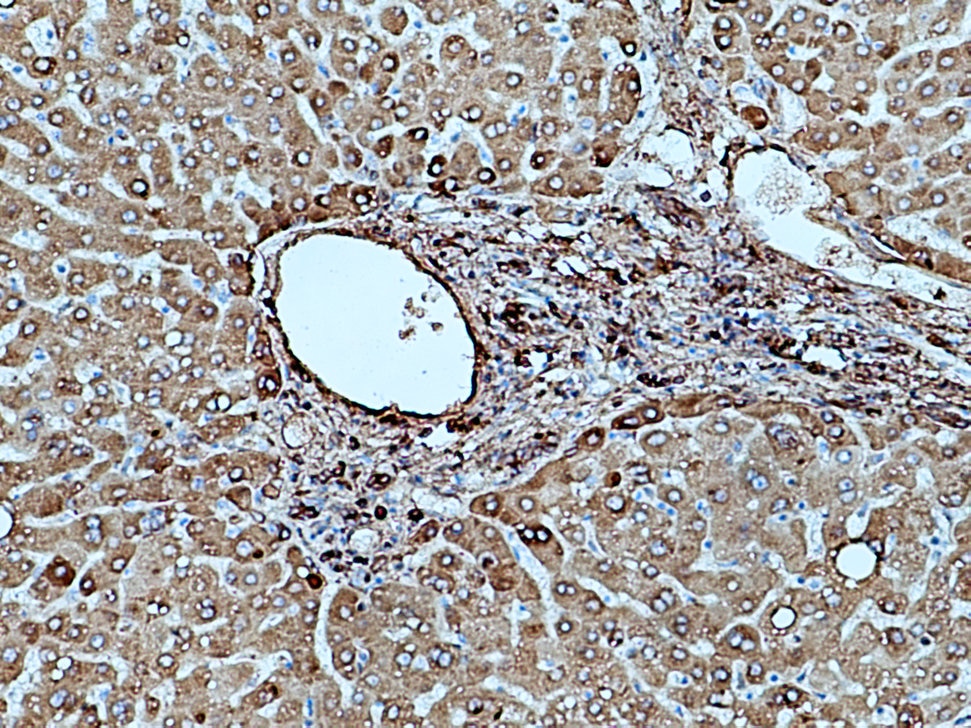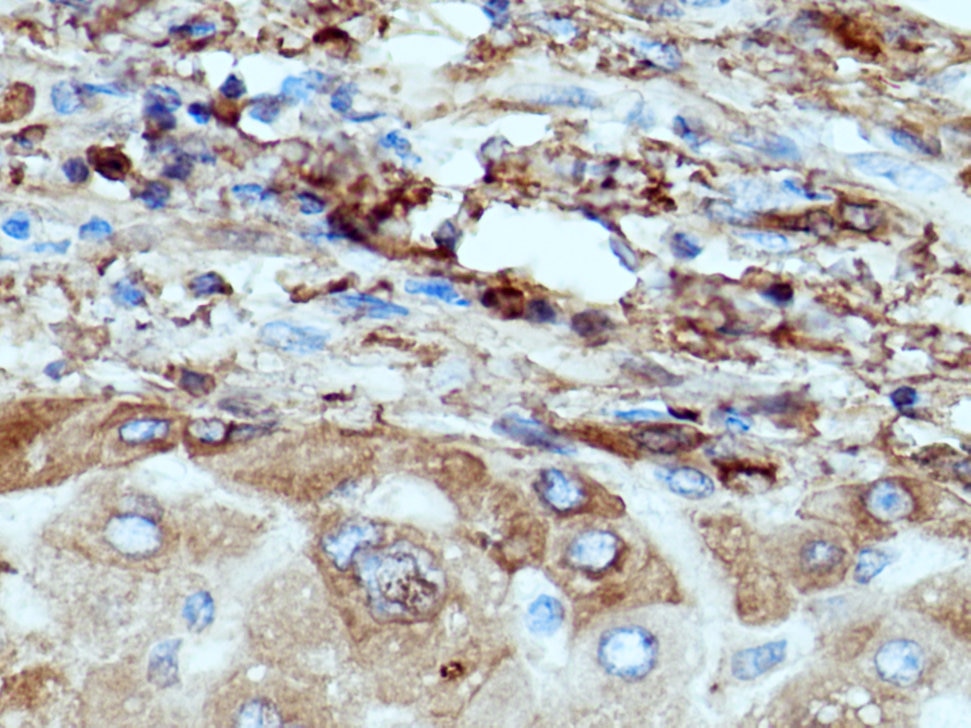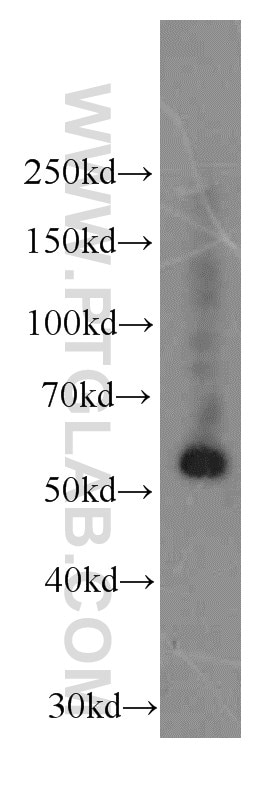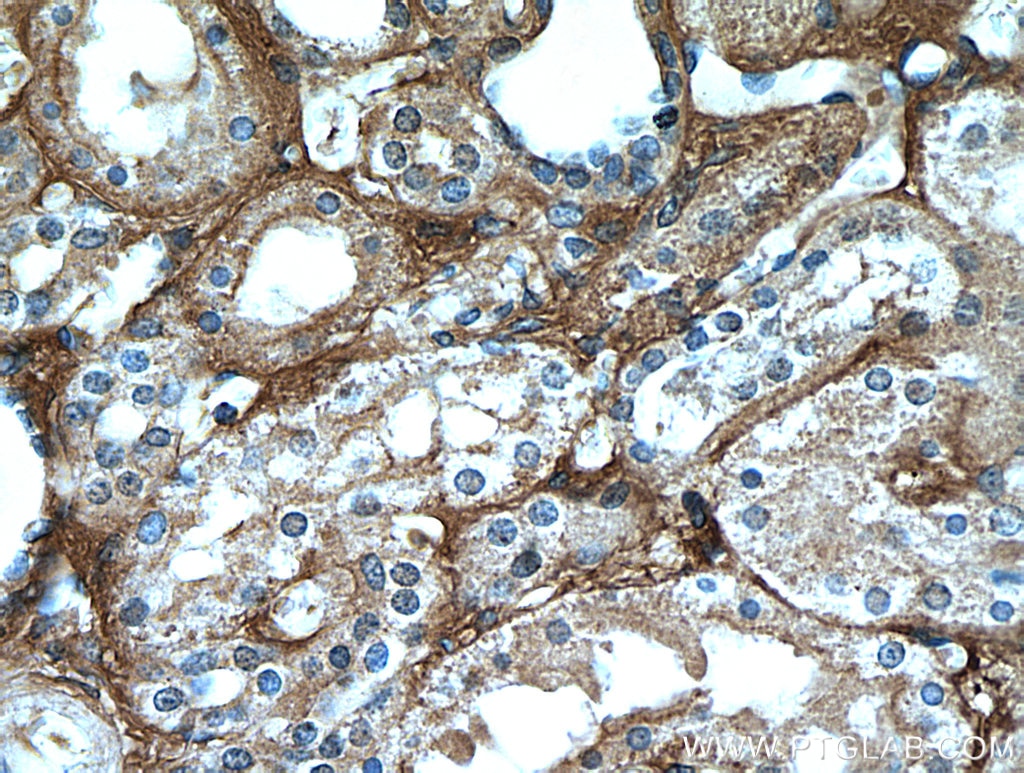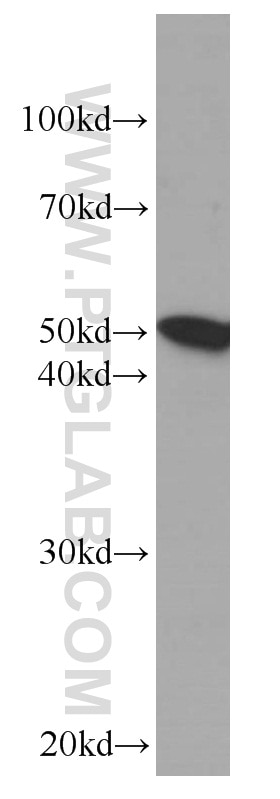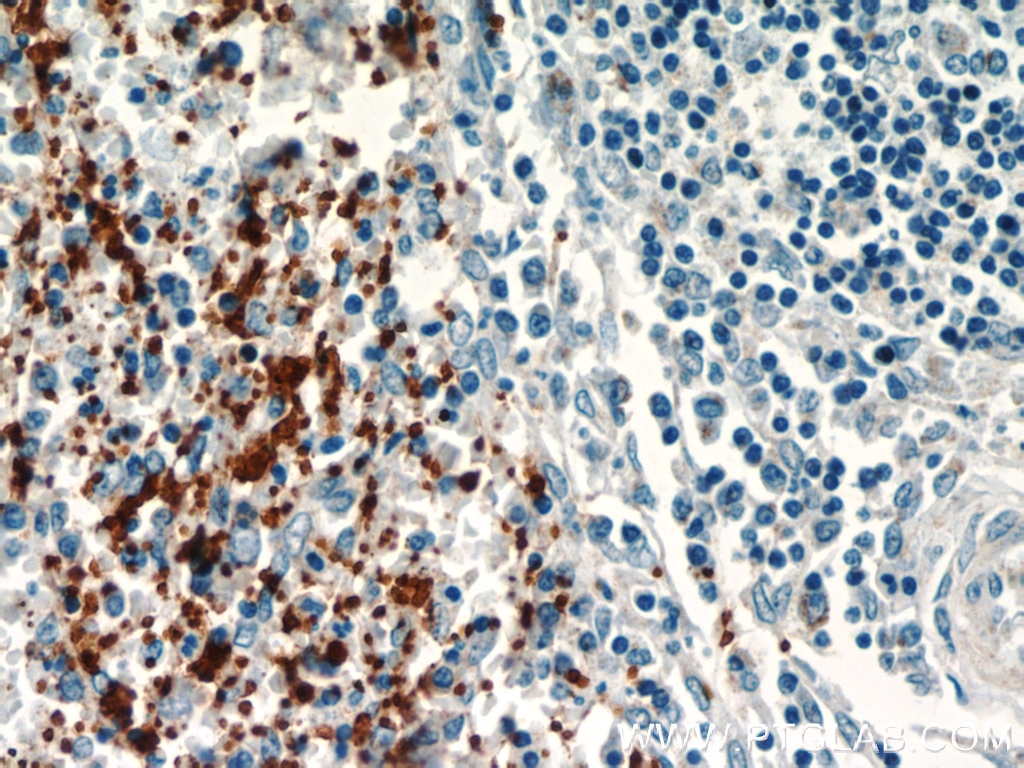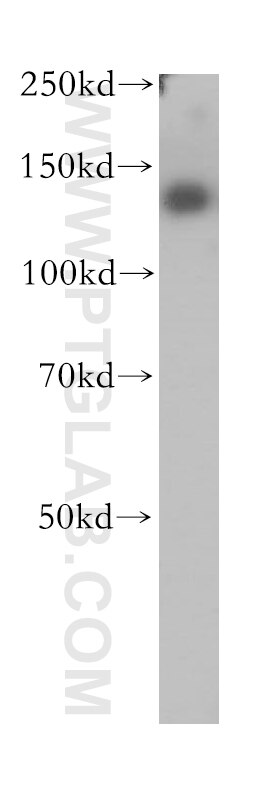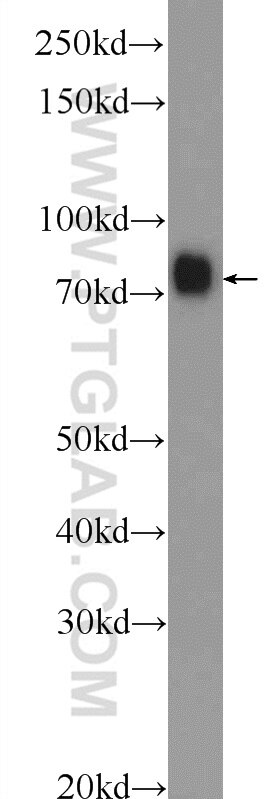- Phare
- Validé par KD/KO
Anticorps Polyclonal de lapin anti-Fibrinogen Gamma Chain
Fibrinogen Gamma Chain Polyclonal Antibody for WB, IHC, ELISA
Hôte / Isotype
Lapin / IgG
Réactivité testée
Humain, rat, souris
Applications
WB, IF, IHC, ELISA
Conjugaison
Non conjugué
N° de cat : 15841-1-AP
Synonymes
Galerie de données de validation
Applications testées
| Résultats positifs en WB | cellules HepG2, tissu hépatique de souris, tissu hépatique humain, tissu splénique de rat, tissu splénique de souris, tissu splénique humain |
| Résultats positifs en IHC | tissu de cirrhose hépatique humain, il est suggéré de démasquer l'antigène avec un tampon de TE buffer pH 9.0; (*) À défaut, 'le démasquage de l'antigène peut être 'effectué avec un tampon citrate pH 6,0. |
Dilution recommandée
| Application | Dilution |
|---|---|
| Western Blot (WB) | WB : 1:1000-1:6000 |
| Immunohistochimie (IHC) | IHC : 1:50-1:500 |
| It is recommended that this reagent should be titrated in each testing system to obtain optimal results. | |
| Sample-dependent, check data in validation data gallery | |
Applications publiées
| KD/KO | See 1 publications below |
| WB | See 7 publications below |
| IHC | See 6 publications below |
| IF | See 6 publications below |
Informations sur le produit
15841-1-AP cible Fibrinogen Gamma Chain dans les applications de WB, IF, IHC, ELISA et montre une réactivité avec des échantillons Humain, rat, souris
| Réactivité | Humain, rat, souris |
| Réactivité citée | rat, Humain, souris |
| Hôte / Isotype | Lapin / IgG |
| Clonalité | Polyclonal |
| Type | Anticorps |
| Immunogène | Fibrinogen Gamma Chain Protéine recombinante Ag8597 |
| Nom complet | fibrinogen gamma chain |
| Masse moléculaire calculée | 453aa,52 kDa; 437aa,50 kDa |
| Poids moléculaire observé | 52 kDa |
| Numéro d’acquisition GenBank | BC007044 |
| Symbole du gène | Fibrinogen Gamma Chain |
| Identification du gène (NCBI) | 2266 |
| Conjugaison | Non conjugué |
| Forme | Liquide |
| Méthode de purification | Purification par affinité contre l'antigène |
| Tampon de stockage | PBS avec azoture de sodium à 0,02 % et glycérol à 50 % pH 7,3 |
| Conditions de stockage | Stocker à -20°C. Stable pendant un an après l'expédition. L'aliquotage n'est pas nécessaire pour le stockage à -20oC Les 20ul contiennent 0,1% de BSA. |
Informations générales
Fibrinogen is a soluble plasma glycoprotein synthesized in the liver. It is composed of two sets of three structurally different subunits: alpha (FGA), beta (FGB), gamma (FGG). Fibrinogen is converted by thrombin into fibrin during blood coagulation. Fibrinogen and fibrin play overlapping roles in blood clotting, fibrinolysis, cellular and matrix interactions, the inflammatory response, wound healing, and neoplasia (PMID: 16102057). FGG is the gamma chain of fibrinogen. Mutations in the gene of FGG lead to several disorders, including dysfibrinogenemia, hypofibrinogenemia and thrombophilia.
Protocole
| Product Specific Protocols | |
|---|---|
| WB protocol for Fibrinogen Gamma Chain antibody 15841-1-AP | Download protocol |
| IHC protocol for Fibrinogen Gamma Chain antibody 15841-1-AP | Download protocol |
| Standard Protocols | |
|---|---|
| Click here to view our Standard Protocols |
Publications
| Species | Application | Title |
|---|---|---|
Blood Fibrinogen β-derived Bβ(15-42) peptide protects against kidney ischemia/reperfusion injury. | ||
J Thromb Haemost Chronic liver injury drives non-traditional intrahepatic fibrin(ogen) cross-linking via tissue transglutaminase. | ||
Sci Rep C-reactive protein (CRP) recognizes uric acid crystals and recruits proteases C1 and MASP1. | ||
J Neurotrauma FTY720 Attenuates Neuropathic Pain after Spinal Cord Injury by Decreasing Systemic and Local Inflammation in a Rat Spinal Cord Compression Model. | ||
Cell Mol Neurobiol Myelin Debris Impairs Tight Junctions and Promotes the Migration of Microvascular Endothelial Cells in the Injured Spinal Cord. |
